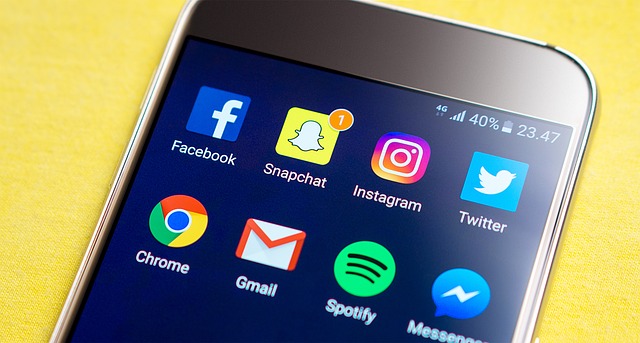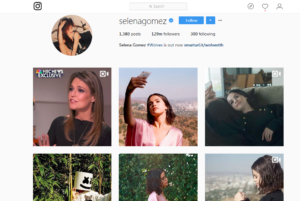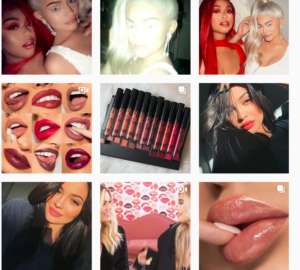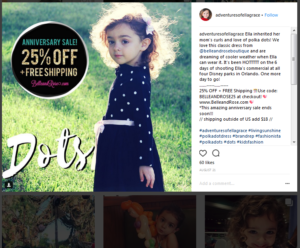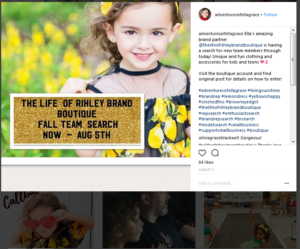In the past two or three years you may have noticed something new happening on your Facebook, Twitter, Instagram, Snapchat and Pinterest feeds: average people touting products or companies, often with the hashtag #ad. These people are social influencers, or people who are paid by brands/companies to talk about a good or service.
But… what is this whole social influencer thing and can you make money doing it? Let’s break this down just a little bit more:
What is a social influencer?
For the purpose of this post, a social influencer is an individual who is paid to relay messages about products or services to his or her social followings on sites like Facebook, Instagram, Twitter and Snapchat. You can take this one step further to include people who use social media to tout their own businesses/blogs, or people in networking marketing companies that post about using the products that they sell. If you’re using social media space to make money for yourself, you can be considered a social influencer – however, for the sake of this post, we’ll just talk about the first type of influencer I mention here, who talks about OTHER brand’s items for pay.
Who can be a social influencer?
ANYONE can be a social influencer.
Of course, there are celebrity social influencers, like Selena Gomez who has the largest Instagram following in the world at 129 million followers and Kylie Jenner who boosts her cosmetics business through Instagram and Snapchat. These influencers represent modern-day celebrity endorsements but instead of being blasted out on every TV station to a blanket audience, they talk directly to people who have already chosen to follow their social feeds.
You don’t have to be a big-name to make some money as a social influencer though. Brands are increasingly focusing more attention on micro-influencers, or people with combined social followings of 8,000 to 250,000. These micro-influencers may have smaller numbers of followers than celebrities or big-name bloggers but they tend to have higher engagement as a result. It’s also cheaper to pay several micro-influencers than the Kim Kardashians of social media.
Some of the most successful influencers to date are kids and teenagers. Mattel and Hasbro recently announced multi-million dollar marketing budgets that will be used to hire kid influencers on platforms like YouTube to unbox (open) toys and play with them. Every toy or electronic device my kids (ages 10 to 3) ask for nowadays comes from a YouTube video they watched – not a TV commercial. That shows you the true influence of kids and social platforms to sell things.
We have a family friend name Ella Grace who is just 4 years old and is making a name for herself as an actor, model and social influencer. Seen here are some screenshots from her Instagram page @adventuresofellagrace. She uses the space to promote clothing, hair accessories and more.
You can click on either photo to be redirected to her Instagram profile, where you’ll see some branded content details, including disclosure and hashtags.
Her following has been completely organic so far and though it isn’t at a Selena Gomez-number yet, it’s helped her in other ways. Her mom Lee calls Ella Grace’s Instagram her digital resume. It helped her land a national Walt Disney World commercial that filmed a few months ago (check it out below). Average people can be influencers and are sometimes the most influential.
Not a kid or Kardashian? That’s okay – find your niche and you can make some money too.
What kind of money can I make in social influence?
This answers varies a lot on a few things:
- Your number of followers on social media – but remember, more followers doesn’t always mean more money. The other factors below will also weigh what brands want to pay you.
- The type of content you deliver – video content, for example, often pays higher than text/photo posts.
- Your niche – parenting bloggers can expect to make less than a niche that is less saturated. It’s true that parenting bloggers resonate with a lot of people but a smaller niche, like vintage dishes (true story, I’ve done some writing for a company that makes a killing in this field), will usually pull in more money per piece of social influencer content. Fashion and beauty influencers also tend to make higher dollar amounts than other types of influencers.
- Your means of outreach – if you handle all of your influencer deals on your own directly, you’ll earn more than going through a company that specializes in connecting brands and influencers (see more on that further down the list).
Mumbling Mommy occasionally creates sponsors tweets through the IZEA Creator Marketplace. We get paid between $5 and $15 per tweet, and sometimes more for photo or video posts. We’ve also done campaigns alongside Blogher and were paid $50 to post five times on social accounts (a combination of Pinterest, Facebook and Twitter, usually). Our combined social following is under 25,000 so that gives you an idea of what you could probably expect with those numbers.
In April, Forbes released its first Top Influencers List and asked those influencers to reveal their earnings. Some did and some were tight-lipped. Social Analytics company Captiv8 stepped in and crunched some numbers based on available data. As you can see in the chart here, YouTube influencers earned more than those posting on Twitter, Facebook, Instagram and Facebook. The numbers here start with people who have at least 1 million followers – but you can see the pattern. In that report, Forbes pointed out that “even a micro-influencer can make a decent living” in the space. An Instagram user with 100,000 followers, for example, can command $5,000 for a post made in partnership with a company or brand.
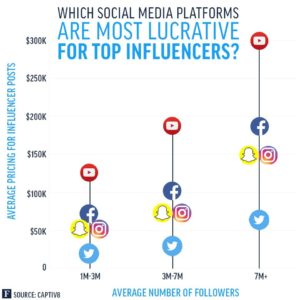
I also found this Entrepreneur article written from the brand’s perspective on what they SHOULD pay influencers, based on reach and content.
Is social influence “selling out” my own space?
That really depends. The social influencers who tend to see the most success are the ones who KNOW their brand and stay authentic. They turn down offers that don’t mesh with what they represent and only talk up products they actual like or use (or have at least tried). If you start touting everything under the sun, chances are your followers won’t know what direction you’re going anymore and they’ll be less engaged, which will negatively hurt your bottom line eventually. If you want to dip your toe in social influence, start slowly until you get a handle on what you’re comfortable promoting and how.
There’s another thing I’d like to add here and it’s something that I heard repeated over and over at the Blogher conference I attended over the summer: Make sure you are paid MONEY for social influence. A brand wouldn’t send a TV producer a bottle of baby wash and expect that to be enough to air its commercial in prime time. Your blog/website and social profiles are valuable real estate. If a brand wants to use the space that you’ve cultivated, you should be compensated with a real paycheck.
How do I even get started as a social influencer?
The first step is building a following. In the old days (like, five years ago) the best way to do that was starting a blog or website. Today, you can really skip right over that and do micro-blogging through social sites. You can also start a YouTube channel and gain subscribers through it who are notified every time you post a new video. Your subscriber list, along with analytics on how many people actually watch your videos, will help you convince brands to pay you for your space. If you already have a following online (numbers really do vary, but you’d want at least 1,000 combined people between your online spaces), then you can take one of two approaches – or both:
- Create a media kit or email template that briefly discusses your brand to send out to potential advertisers. Include social following numbers and links to your online places. Come up with a pitch – like how much you charge for a sponsored post on your blog or a sponsored piece of social media content and on which sites. Let the advertiser know exactly what he or she will receive in return for that price. For example, if you create a sponsored blog post about the brand, will you also share it on your social media channels? How many times? If you have the real estate, I’d use it. You may have brands write you back who want to negotiate price or details of what you post. It’s up to you if you agree to those compromises. Remember though that disclosure is really important. If a brand asks you T to mention that a post is paid, you should decline.
- Join an influencer network. Mumbling Mommy is part of the IZEA Creator Network and the Blogher Network. We also receive brand pitches through email and accept some directly. There are MANY more influencer content platforms out there so do a little research and see which ones make the most sense for you. Here’s a list of influencer networks I’ve used or I know people who have:
IZEA
Blogher
Webfluential
Inzpire.me
Buzzoole
Social influencers are here to stay and can provide some lucrative income paths for people with online followings. The space is somewhat of a Wild West – with no real regulation or rules. The U.S. Federal Trade Commission already has its eye on social influence though, so expect more official legalities in the next few years. Have more questions? Leave me a comment below.
Want to read more insight on working from home? Check out these other posts in our Freelance Friday series:
How to Get Started as a Freelancer
5 Places to Find Writing Work – For Free
Hidden Costs of Self-Employment
Making the Switch to Working from Home
Sales Tips for Non-Commerce Small Business Owners
4 Reasons Writing is the Perfect Part-Time Job
5 Things No One Tells You about Owning a Small Business
Can You Really Take a Vacation When You Freelance?
Let’s connect on social media too:
Mumbling Mommy on Facebook
Mumbling Mommy on Instagram
Mumbling Mommy on Twitter
Mumbling Mommy on Pinterest
Category: FreelanceTags: Freelance Friday








